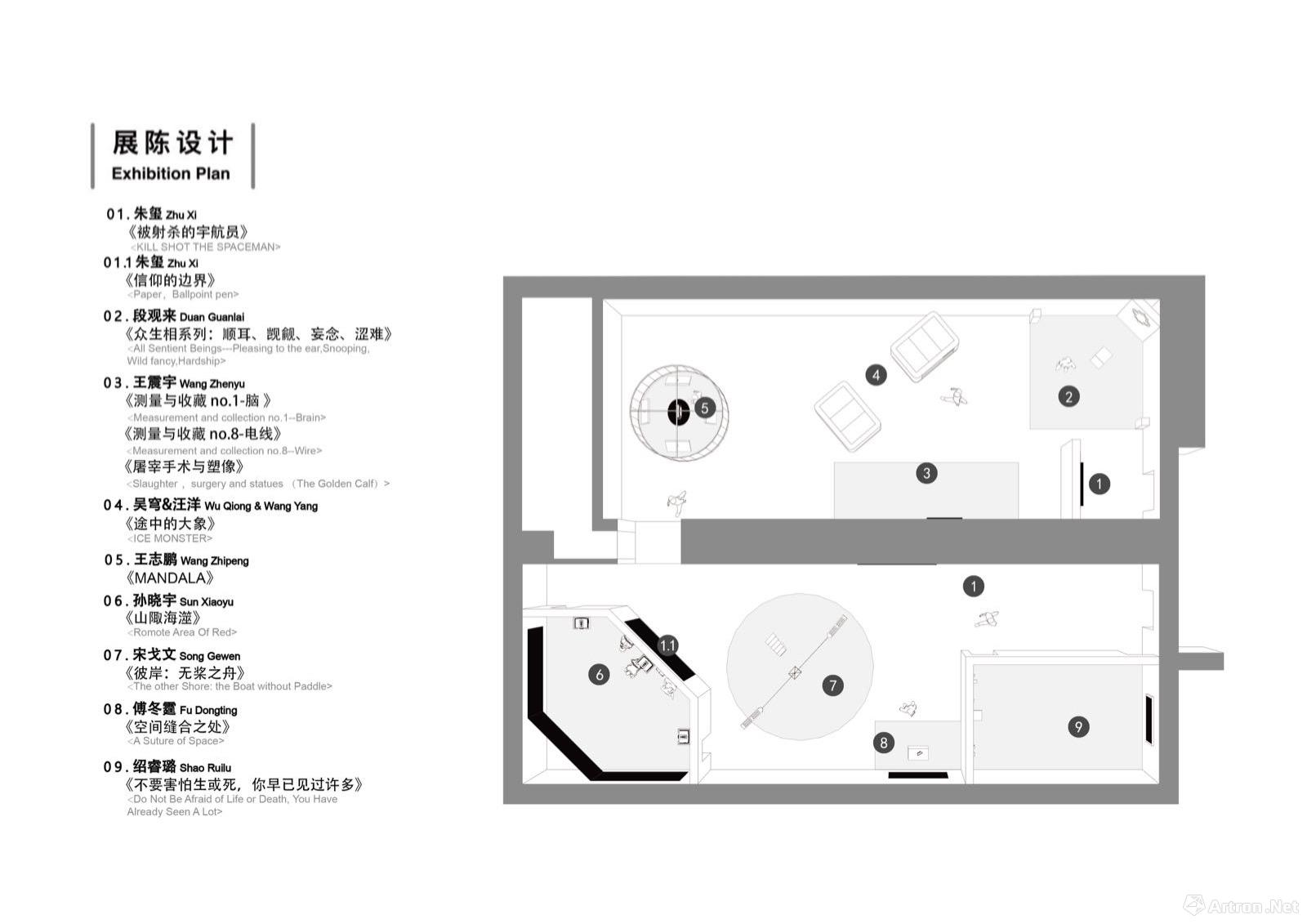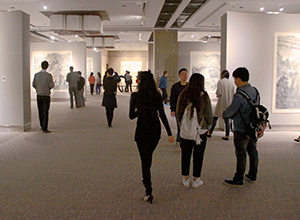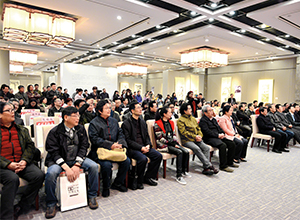“妄念”对话|邵睿璐:也许你早已见过无数次的生生死死
时间:2018-09-14 来源:雅昌艺术网 作者:雅昌艺术网
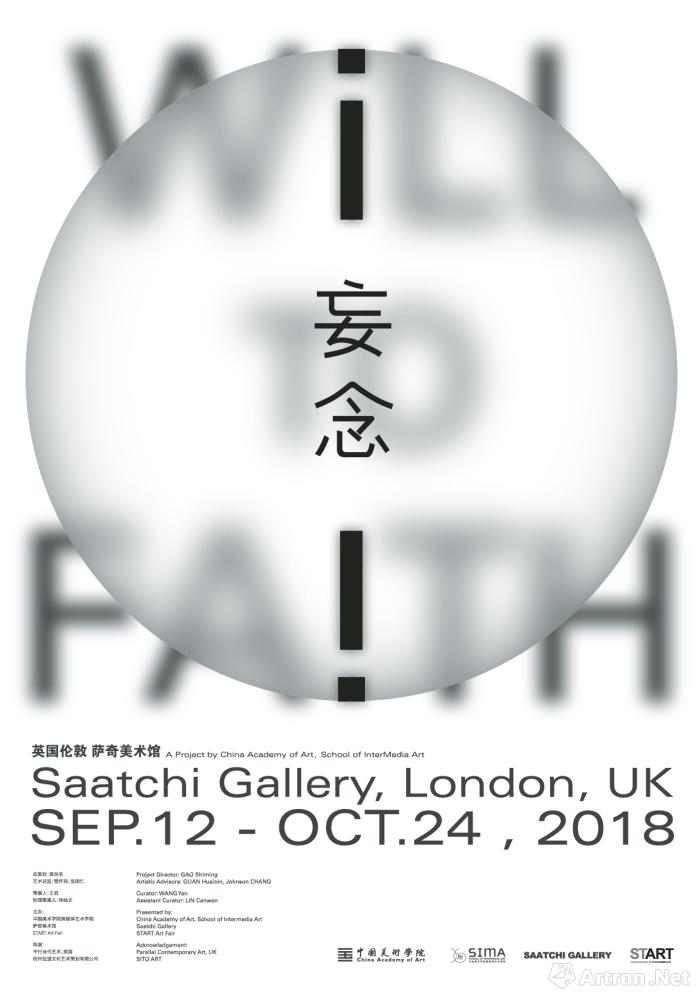
妄念
时间: 2018年9月12—10月24日
地点: 英国伦敦 萨奇美术馆
艺术总监:管怀宾 张颂仁
策展人:王岩
助理策展人:林灿文
主办:中国美术学院跨媒体艺术学院 萨奇美术馆
鸣谢:平行当代艺术(英国) 杭州世通文化艺术策划有限公司
2018年9月12日,由策展人王岩策划的展览《妄念》将在英国伦敦萨奇美术馆举行,本次展览由中国美术学院跨媒体艺术学院、萨奇美术馆和START艺术博览会主办,得到了中国驻英国大使馆文化处的大力支持。展览呈现了十位/组中国青年艺术家(朱玺、段官来、王震宇、吴穹&汪洋、王志鹏、孙晓宇、宋戈文、傅冬霆、邵睿璐)全新创作的十余件绘画、装置及影像作品,不仅融合东方传统哲思与西方当代文化视野,更集中呈现了中国青年艺术家对社会当下的回应、反思与预测。折叠现实与精神世界,领观者游走其中,同时探寻虚妄与执念、身份与权利、政治与信仰等议题。作为一次实践,“妄念”不矫准任何偏离,也肯定非常规的生命体验,挖掘并还原隐含于艺术创作中不可视的信息和精神图景,重新思考艺术的力量。
展览启幕之前,雅昌艺术网将陆续刊发十位/组参展艺术家的对话内容,以期更真实地呈现他们的所思所为。
对象:邵睿璐Shao Ruilu
Q&A
Q:《不要害怕生或死,你早已见过许多》( 《Do Not Be Afraid of Life or Death, You Have Already Seen A Lot.》)这件作品的创作契机是什么?
What motivated you to create Do Not Be Afraid of Life or Death, You Have Already Seen A Lot?
A:这件作品不存在一个非常清晰的“灵感迸发时间点”,可以说是这三年来日思所想、理论和创作探索、三年间的生活经历所聚合,厚积薄发出的产物,是一种情感的宣泄吧。
It does not have an explicit "inspirational time point". It is safe to say that, it is the product of thoughts, theories, explorations, and life experiences of the past three years. And it is also some sort of “emotional catharsis”.
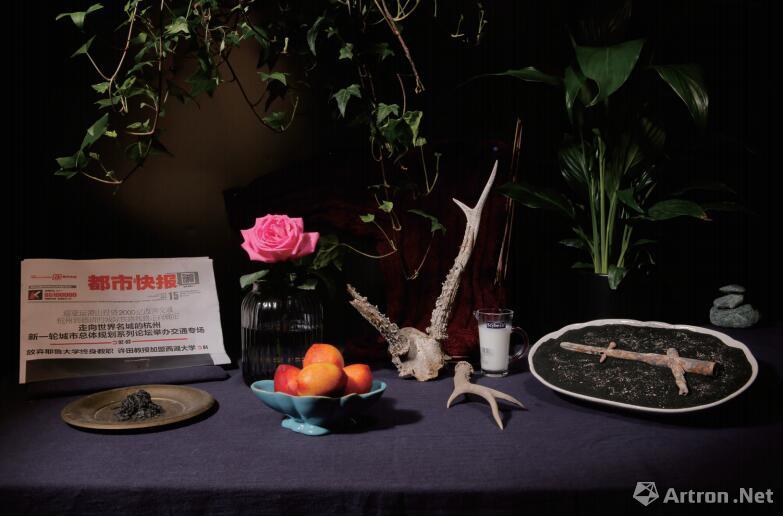
邵睿璐 不要害怕生或死,你早已见过许多 互动&延时摄影 尺寸可变 无限循环
Q:“生死/生命”会是你创作中长期思考的一个重要主题吗?是否可以更详细的介绍一下对于STILL与LIFE的真实表达?
Will “life and death/life” be an important theme in your long-term thinking and creation? Can you give a more detailed introduction to the true expression of STILL and LIFE?
A:最初与导师确定硕士阶段的研究方向时,我选择的是摄影。但后来我们都认为这个分类是无效的,因为摄影它有人物、纪实、静物、风光等各个方向,它的涵盖面仍然太大了,是全世界。短短三年我想要了解透的只可能是其中一个门类。而当时想了很久,最终是被静物的英文名“still life”所吸引了,才决定说,“好,钻研这个了!”
At the very beginning, after I discussed with my instructor on the direction ofartistic creation, I chose photography. But then we all felt that this direction was too vague. Photography contains many directions such as portrait, documentary, still life, and scenery. It covers too large a domain. It is still as big as the world. In three years I can merely learn one of them. So, I did a lot of thinking. At the end, I was attracted by the English name "still life", and I said, "Okay, that’s it!"
而生与死这两个元素对于静物画、静物摄影的意义,也不是说我突然给它这么一个定义,其实也是在理论和创作研究中一步一步建立起来的。
The two elements, life and death, is something for still life painting and still life photography. I’m not saying that I give it this definition out of blue. It was actually built up step by step in theoretical research and creation practice.
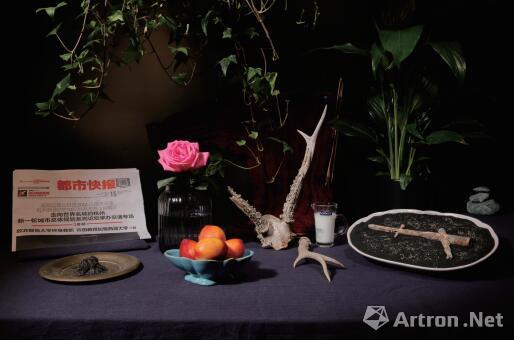
起初,我觉得静物摄影拍摄的就是物品,所见即所有。
At first, I thought that still life photography was all about the specific object, and you get what you see.
后来我发现,静物摄影拍摄的是静物背后那看不见的人。因为只要是人生产的物品或是人是用过的物品,都会有人和时间留下的痕迹。这是在我两个很接地气的摄影系列《百家橱窗》和《废物王国》里特别明显去探讨的东西。《百家橱窗》是我在苏州和杭州的老居民区内拍摄各家各户的“门面”。本是一样的门、窗,在日常生活中被人们因方便或个人喜好,而进行改造了的生活景观,比如堆满了各种物品的窗台、改造过的门、自己修理的缠满铁丝的门口放着的乘凉椅等等,非常有趣。而《废物王国》系列是我在2017-2018年持续在杭州拆迁废墟中,寻找并拍摄人们在搬迁中有意或无意地遗留下来的沙发、椅子等各种物品。
Later on, I discovered that still life photography was about the invisible person standing behind the object. Be it an artificial item or an natural object, as long as it was used by a person, there must be traces of people and time. This is particularly discussed in my photography series, Hundreds of Windows and Waste Kingdom. In Hundreds of Windows it is the "facade" of households in old residential area of Suzhou and Hangzhou. All the similar objects that had been transformed by people for convenience or personal preference, such as window sills crowded with items, modified doors, and a wire-wrapped summer chair at the doorway, etc. Waste Kingdom series is about a variety of items such as sofas and chairs that people left behind, intentionally or unintentionally, during their relocation. This was what I found and shot in ruins after demolition in Hangzhou during 2017-2018.
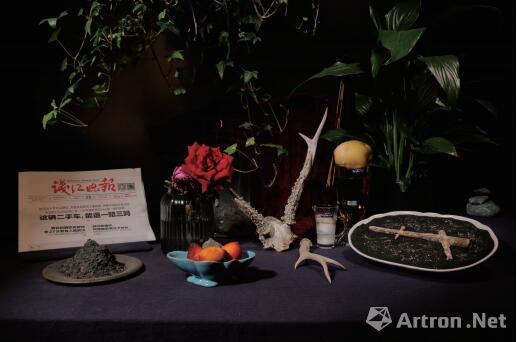
更后来,我发现拍的是物也好,是人也好,更为隐形但是也更可怕的、更本质的是它们背后的生与死。有一些我拍摄的家具,在拍完后的一分钟就被拆迁机器所破坏,等于我为它拍了一张遗照。也有一些家具的使用者已经过世,它身上的痕迹是主人活过的证明。那不看人为的物品,自然界中,一朵花、一棵草能更为直观地在它们身上看到生长与衰败。
Still later, I found something more invisible, more terrible, and more essential - the life and death behind objects, whether it is an object or a person. Some of the furniture I shot was destroyed right away by a bulldozer, making them the last photos. There were also some furniture, whose users had passed away, and on which the traces left were an evidence that the owners had lived with them. If we skip the artificial objects and just take a look at the natural world, we would observe growth and decline more intuitively, like that of a flower, even a grass.
静物摄影拍的不是就是生与死么?
If still life photography was not about life and death, then what else it can be?
Q:画面中的植物,不断枯萎的鲜花和腐烂的水果,小鹿头骨,毛衣,钢钉以及每日更新的报纸和前一日被烧成灰的报纸灰烬等等,你是怎样选择这些物件的?为什么是这些?
How do you choose objects for your photos? For example, plants, wilted flowers and rotten fruits, deer skull, sweater, steel nails, daily newspapers, ash of newspaper that was burned on the previous day, etc.? Why are these things?
A:我需要画面中有不断衰败的、逐渐死亡的元素,如一束束枯萎的玫瑰、腐烂的油桃、变质的牛奶与果汁;我也需要有不断生长的、新生命的元素,如生长的绿色植物、油桃腐烂后长出的蛆和小飞虫、小巴西龟;也有既定事实,如小鹿的头骨(我在深山中捡到的,不是我杀生了)、奶奶生前未织完的毛衣、外婆体内的钢钉(火化后取出)。生与死在这张静物台上同时发生,也在生活中随时随地地发生。
I need elements that are fading and dying, like a bunch of withered roses, rotten nectarines, spoiled milk and juice; I also need those with constant growth and new life, such as growing plants, maggots and little bugs that grow after nectarine rotted, and small Brazilian tortoises. Established facts are also employed, such as the deer skull (I found it deep in a mountain; the deer wasn’t killed by me), the sweater that was not finished knitting when my grandmother died, and the steel nail found in grandmother's bone ash (taken out after cremation). Life and death occur simultaneously on the bench of still life, and also happen in real life, anytime anywhere.
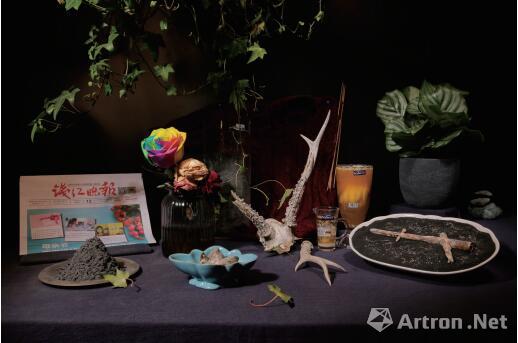
至于很多人问我,像钢钉这么沉重的东西我是为了这件作品才去保留的吗?答案是:并不是。当时外婆在火化后,我和几位长辈一起进入了领取骨灰的地方,大家曾经对外婆在胯骨手术后一直喊着“疼啊疼啊”并不能感同身受,直到看到了这么长的一根坚硬的异物!都很震惊,也很难过。亲人认为不适合放入骨灰盒内,但我看到这根钢钉上已然粘着外婆的骨灰了,我觉得不能扔掉,于是决定把它留下来,我来保管。直到设计这张静物台上的元素时,我才认为要把它放进来。于是成了这件作品中,对我来说最沉重的部分。
Many people ask me, is it for this piece of work to keep things as heartbreaking as the steel nail? The answer is no. After my grandmother was cremated, I entered the room together with several elders to get her ash. My grandma used to yell "pain" after her hipbone operation, but none of us could feel her pain, until we saw such a long and hard nail. We were shocked, and sad. They believed it was not suitable to place it in the casket, but I noticed there were bone ashes stuck on the nail, and I felt that I can’t just throw it away like that, so I decided to keep it. I didn't put it in any work until I was designing the elements for this still life bench. So, at last it became the heaviest part of this work for me.
Q:各式的“物”(objects)在你不同系列作品里以不同形式现身,你是怎样观察与思考的?
How do you observe and think about the various "objects" that appear with different forms in your different series of works?
A:就和做装置时要考虑一种材料的属性一样,我在挑选静物时要考虑一、它的外观。毕竟做的是视觉艺术,我要从视觉上去挑选、摆放物品;二、意义。这和高中时画静物水粉画可不一样了,不能照着样子画了。我要去考虑每一件物品背后的意义及隐喻。既有使用功能性,也有文化意义。比如说手表、时钟象征的时间;不同的货币象征着的不同国家,组合则产生了国际组织的隐喻。对静物的思考其实可以很细致,比如你挑选一只杯子,如果上面还粘着标签那它就是一件商品,把条形码取下来、去除它的商标才是一只简单的杯子。
Just like you got to consider the properties of a material before making any installation, I have to consider the appearance of an object at the very beginning. After all, what I do is visual art; I have to select and place objects visually. The second thing I have to consider is the meaning of it. This is not a still-life gouache painting in high school. You can't just draw the object as it is. I have to think about the things behind each object, meaning, metaphor, function and cultural significance. For example, the time a watch or a clock symbolizes, or the different countries symbolized by different currencies. The combination of them produces metaphors of international organizations. The thought put on an object can be very detailed. For example, if you pick a cup and stick a label on it, it is a commodity. It won’t be a cup until you remove the bar-code and trademark on it.
Q:为何选择看似这么复杂的展示方式?
Why choose a display that looks so complicated?
A:其实这是2.0版本。2017年底在香港的驻地项目中其实我第一次尝试了用延时摄影拍摄静物。当时是一件团队合作作品,我们探讨香港九龙公园的文化交融现状,选择的突破口是食物。九龙公园可以说是香港的缩影。在周末,在香港做保姆的印尼人、菲律宾人等在公园庆祝她们的holiday,她们会在公园里做、吃、买卖自己国家的食物。我们的团队从在公园愿意分享食物的人手中,免费收集到了来自菲律宾的、印尼的、越南的、大陆的、香港的、巴基斯坦的、印度的、意大利的食物,我们认为,food share同时也是一种文化的share。于是我们把各个国家的食物搅拌、混合在一起,在香港这个地方特有的湿度、空气、温度里互相影响、一起发酵。当时我选择的就是用延时摄影记录,展示则是直接播放这段延时摄影影片。
Actually this is the version 2.0. In the resident project of Hong Kong at the end of 2017, I actually tried to shoot time-lapse still life photography for the first time. It was a teamwork. We discussed the state of cultural integration in Kowloon Park, Hong Kong. The first object we discussed was food. Kowloon Park, to some extend, is the epitome of Hong Kong. On weekends, Indonesians and Filipinos who were doing baby-sitting jobs in Hong Kong spend their holiday in the park. They cook, eat, and trade food with style of their own country in the park. We collected food from the Filipinos, Indonesian, Vietnamese, Chinese, Hong Kong, Pakistanis, Indian, and Italian who were willing to share food without any charge in the park. We believed that food share was also a cultural share. So we mixed food from different countries and fermented the mixture in the unique humidity, air and temperature of Hong Kong. I recorded this work with time-lapse photography, and on the exhibition I just directly play the time-lapse film.
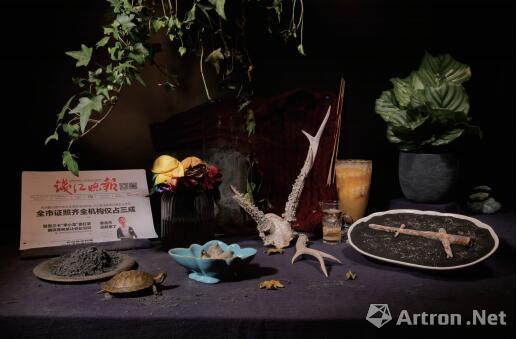
但其实对于当时的展示效果我不太满意。因为我还是希望能保留它摄影的特质,而不是一段影片。但同时对我来说,我也不满意展示静止摄影作品的效果,因为《不要害怕生或死,你早已见过许多》(《Do Not Be Afraid of Life or Death, You Have Already Seen A Lot.》)这件作品中,这40天内的任何一张拍摄都可以成为相框里的照片,我认为挑选任何一张都对其他不公平,也没有必要。所以在动态影像和静止照片中,我选择加入一个感应互动的方式来中和,让观众去选择。
But in fact I was not quite satisfied with the effect of the exhibition, because I wanted to retain the unique quality of photography, instead of a single piece of film. But at the same time, I was not satisfied with the effect still photography either. Because in creating the Do Not Be Afraid of Life or Death, You Have Already Seen A Lot, any shot in the 40 days could be a framed photo. I did not think it was fair to pick any photo out from them and it was also not necessary. So, I used an inductive and interactive approach to mediate motion pictures and still photos, and let the audiences to choose.
当远远望去,它就是灯箱中静止的一张照片,你看到了生与死的一个瞬间。而如果你想走进看看,你触发了感应开关,才会看到这40天来发生的,也许你早已见过无数次的生生死死。
When you look at it from far away, it is a still photo in the light box and you just see a moment of life or death. But if you walk in, trigger the sensor switch, you would see all of those lives and deaths in these 40 days, and maybe you have seen them a lot.
